In the shadow of the luxury clothing shops and electronic stores lining the eastern end of Tehran’s Mirdamad Boulevard, 55-year-old Amaneh spreads on the ground an array of hair ties, women’s tops, and plain men’s socks that she sells to passersby. She is one of thousands of peddlers who make a living selling cheap and often recycled goods on the streets of Tehran.
“[The police] don’t bother me,” Amaneh says, retrieving a card and holding it up. “See, I’m disabled, and I always carry my card.” She hasn’t stood up or moved since she started talking. “They know I’m ill.”
Constantly threatened by changing city ordinances and rogue security officials out to extort protection pay, the work is far from being physically or financially secure. Still, many poor residents turn to street selling as their economic conditions worsen, in a last-ditch effort to pay for the growing costs of healthcare and household management. Most of them are not migrants, but Tehran residents facing dire existential problems: street children, struggling students, disabled former construction workers, desperate mothers with children in tow. Inside metro carriages and below the feet of pedestrians on high-traffic boulevards, their growing presence is a thorn in the side of Tehran authorities, who often stage harsh crackdowns against them.
Marjan, 10, who sells goods at a metro station and occasionally boards the trains to hawk postcards, says that the authorities have yet to turn down the heat.
“They follow you and we hide our goods under clothes,” she says. “But they still know. It’s like they can just tell by looking at you.”
Ali, a 30-year-old street seller in Karim Khan, says he has to pay protection money to avoid harassment by city law enforcement. “If I don’t, they’ll just take everything,” he says. “In the end it’s worth it, just to stay afloat. It’s exactly like in the days of the Qajar monarchy: The beggars had to pay protection money to royal patrols just to be left alone and do their begging in peace.”
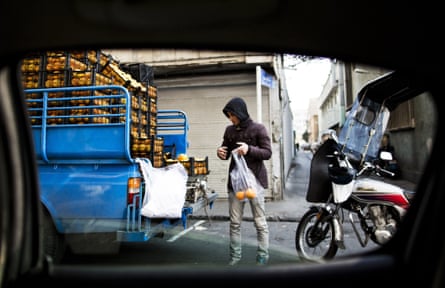
The situation took a turn for the worse last month, when Tehran city officers tasked with alleviating “street congestion” brutally assaulted 41-year-old street seller Ali Cheraghi. A few days later, Cheraghi died of his wounds. A former petty tailor and mender, at the time of his killing Cheraghi salvaged trinkets from the the trash heap to make a living, gathering them from dumpsters and loading them into the back of a truck with the help of his 14-year-old son Abolfazl. Ali died on 14 August at Nurafshar hospital in Niavaran, north Tehran.
Abolfazl gave a testimony of the events to the Iran workers’ news agency (ILNA): “A truck from the ‘street congestion’ committee turned in front of us and blocked our way. Then four guys got out and told my dad to step out. He told me to stay seated, and then he got out and I listened. One of the officers told my father that the truck would be confiscated, and my father he said he would call the police. But when he began dialing, the officers pounced on him. One of them grabbed his hands and held them behind him and the others beat him. When I got down from the truck, I saw one of the officers hit my father on the side of the head with a set of brass knuckles. That was when he fell to the ground.”
According to the testimony, all four of the officers then fled the scene, finally allowing Abolfazl to call for help. The attack occurred near Bagheri Highway on West 196th Street, and a 13-second film of an unconscious Cheraghi lying on the ground was captured by witnesses and has since made its way to YouTube.

Ahmad Masjed Jome’i, the current president of Tehran’s city council and former head of the Islamic ministry and guidance under Mohammad Khatami, visited Ali Cheraghi’s family in a show of solidarity and demanded answers from the Tehran mayor’s office. He called the officers’ actions “inhuman” and “oppressive,” adding that witnesses confirmed the police officers’ involvement in the crime.
Facebook users jokingly predicted the mayor’s characteristic indifference toward social justice issues, simultaneously hoping he would be unable to skirt this controversy as easily as past scandals. In recent weeks, social media users also berated the politically conservative former police chief for his attempts to impose gender segregation in administrative offices.
Ghalibaf’s official response came one week after Cheraghi’s death, but erroneously referred to the event as though it had happened the previous day. The mayor referred to Cheraghi’s case as a “constant problem.”
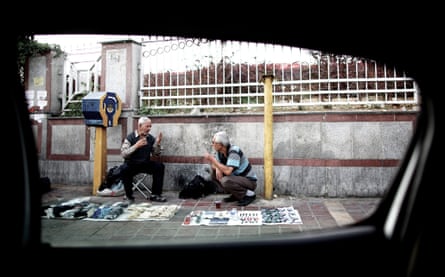
“The courts will see to the events of yesterday...They will be capable of seeing the truth and identifying the wrongdoers,” Ghalibaf said, effectively absolving himself of responsibility and passing the matter off to the judiciary.
One hallmark of Ghalibaf’s mayorship is the outsourcing of administrative and security contracts to the private sector. As a result, contractors became convenient scapegoats for scandals. After the media picked up the Cheraghi story, Ali Javid, the young deputy mayor of Tehran’s fourth district, said that the main “elements” responsible for this crime were private contractors lacking direct ties to city administration. He added that the deputy mayor of the district where the assault took place also shared responsibility for Cheraghi’s death, as he allegedly failed to notify the relevant city organs of the incident.
Rahmatollah Hafezi, president of the commission of health, environment, and city services of the Tehran City Council, criticised the mayoral office’s report on the Cheraghi killing, pointing out that no mention is made of the background against which the altercation between Cheraghi and the officers occurred. Hafezi then referred to “outrageous” bribing and extortion practices of city contractors and suggested that the city government pass emergency laws to confront corruption.
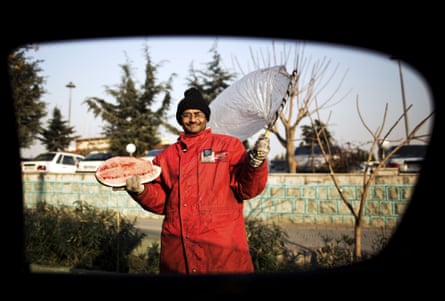
Whether hired by the city or private companies, security officials have “stolen more of my stuff than I care to think about - up to 300,000 tomans ($100) worth of things in one go before,” says Rajab, who sells a colourful pallet of knick-knacks on Valiasr Street. “You can just barely get by if you bribe them. In fact, you can’t get anything done without a bribe in this country. Going to the police station all the time, every day, to deal with the harassment, you won’t be able to sell anything. Paying the money is the only way to go.”
Rajab is the sole breadwinner in a large family. At home, he struggles to pay for food and utilities and attempts to foot the medical bill of his wife, who suffers from uterine tumors. His youngest son attends fifth grade while his eldest daughter attends university, where she pays about $330 per term for tuition. Each day, he departs from the Shahriyar neighborhood on the outskirts of Tehran at around 6am to get to his selling spot by 9. On hot summer days he sits on the sidewalk until around 8pm before riding the bus back to Shahriyar.
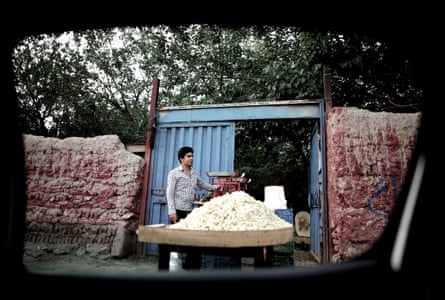
Business is slow, he admits. “If I make even a little bit, I end up spending all of it that night on things we need for the home. No one’s really buying anything at the moment.”
Rajab sells small decorative cars, yellow toy school buses, and antique Handley watches. He also sells disposable razors, dolls, and sunglasses. He says he was once a construction worker, but turned to street selling 18 years ago after a workplace accident.
“I fell off of a wall while working and landed on some glass. It cut me from here,” he says, drawing a line with his finger from the top of his chest, “to here.” He finishes at his bellybutton. “My innards were coming out. I was in a pretty bad state. It took me a year to recover and I can still feel the stitches and wounds to this day. When I got better, I had to start selling these things.”
A girl stops in front of Rajab and asks him the price of one of his items. “7,000 tomans,” he says, and he continues: “They [the police] come randomly and hit you, they scream all kinds of horrible obscenities at you, they smack you on the head ... I don’t have any connections. I have to go along with whatever happens.”
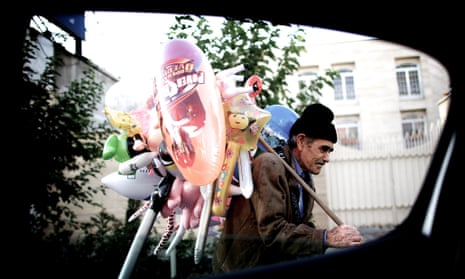
Comments (…)
Sign in or create your Guardian account to join the discussion